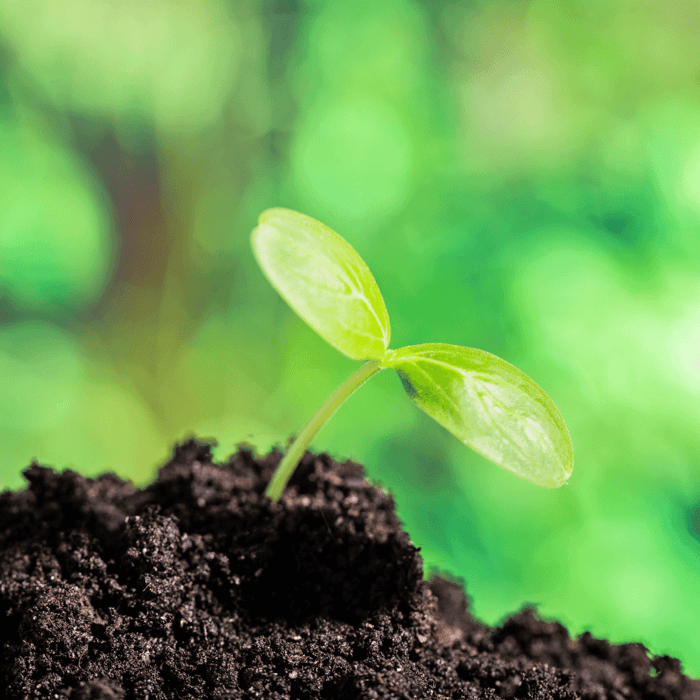Vertical Vegetable Gardens: Growing Up, Not Out
Vertical vegetable gardens are the perfect solution if you live in a small space or don't have access to a traditional outdoor garden plot. These gardens are designed to grow plants upward instead of outward, which means they take up less space while still producing an abundance of fresh veggies and herbs. This article will explore the benefits of vertical vegetable gardens and provide tips for choosing the best plants to ensure your garden is successful.
The Benefits of Vertical Vegetable Gardens
Vertical vegetable gardens offer several advantages over traditional gardens. First and foremost, they allow you to grow more food in less space.
You can maximize your growing area by utilizing walls, trellises, or other structures to support your plants without wasting valuable ground space. In addition to saving space, vertical vegetable gardens are easier to maintain than traditional gardens.
Harvesting your crops is much easier when they're at eye level rather than on the ground. Plus, since most vertical gardens are designed with drip irrigation systems built-in, watering is easy and efficient.
Another benefit of vertical vegetable gardening is that it allows you to grow fresh produce even if you don't have a backyard or suitable outdoor space for a traditional garden. You can install a vertical garden on a balcony, patio, or indoors near a sunny window.
Choosing the Right Plants and Heirloom Seeds for Your Vertical Garden
While there's no shortage of heirloom vegetables and herbs that can be grown in a vertical garden, it's important to choose plants that will thrive in this type of environment. The ideal plants for a vertical garden are those with compact growth habits and shallow roots. Leafy greens like lettuce varieties, spinach, kale, and arugula are excellent choices for a vertical garden because they don't require much space and can be harvested continually throughout the season if their leaves aren't damaged.
Vining vegetables like tomatoes, cucumbers, beans, and peas are also well-suited to vertical gardening. They can be trained to grow trellises or other support structures, taking up less space than in a traditional garden.
Vegetable Seed Vault Kit | 35 Variety Pack

$29.95
$49.95
Ultimate Survival Seed Vault: 16,000+ Non-GMO Heirloom Vegetable Seeds for Emergency Preparedness Introducing the Seed Vault Kit, your all-in-one solution for emergency preparedness and sustainable gardening. This premium seed kit contains over 16,000 non-GMO, Heirloom, Non-Hybrid, and Open Pollinated seeds,… read more
Best Plants for Vertical Vegetable Garden
Vertical gardening has become increasingly popular among urban gardeners with limited space. Choosing the right plants is crucial to ensure a bountiful yield if you create a vertical vegetable garden. Here are some plant options that thrive in vertical gardens.
Vining Vegetables
Vining vegetables are perfect for trellises or stakes since they require minimal space on the ground level while reaching upwards toward sunlight exposure above them. Tomatoes can be an excellent choice for vertical gardening since they are easy to grow and produce a lot of fruit.
Zucchini
Zucchinis are versatile vegetable that is well suited for vertical gardening. Growing zucchinis vertically saves a lot of space as these plants can spread quite a bit when grown horizontally. When trained to grow up a strong trellis or cage, zucchinis can grow healthy and strong, with their fruit hanging down for easy harvesting. Additionally, this growth method keeps the plants off the ground, reducing the risk of fungal diseases due to excessive moisture.
Tomatoes
Tomatoes, both determinate and indeterminate varieties, are excellent for vertical gardening. They naturally grow towards the sun and can easily be trained to grow upwards using cages, stakes, or trellises. This vertical growth allows for better airflow around the plants, reducing disease risk and making pest control more accessible. Additionally, it provides easier access for pollinators, potentially increasing yield and making harvesting a breeze.
Cucumbers
Cucumbers are ideal for vertical gardens because they have long, trailing vines that cling to trellises or stakes. Growing cucumbers vertically is great because otherwise, they would take up a lot of room in a garden if left to vine all over the ground. Cucumbers are an ideal candidate for vertical gardening due to their climbing nature. With the help of a trellis or netting, cucumbers can be guided upwards, promoting healthier growth and a better yield. This also makes harvesting simpler and more efficient, as the fruits are clearly visible among the leaves. Vertical growth also keeps the fruits off the ground, greatly decreasing the chances of them getting disfigured, dirty, or eaten by pests.
Cucumber Seed Assortment | 8 Variety Pack
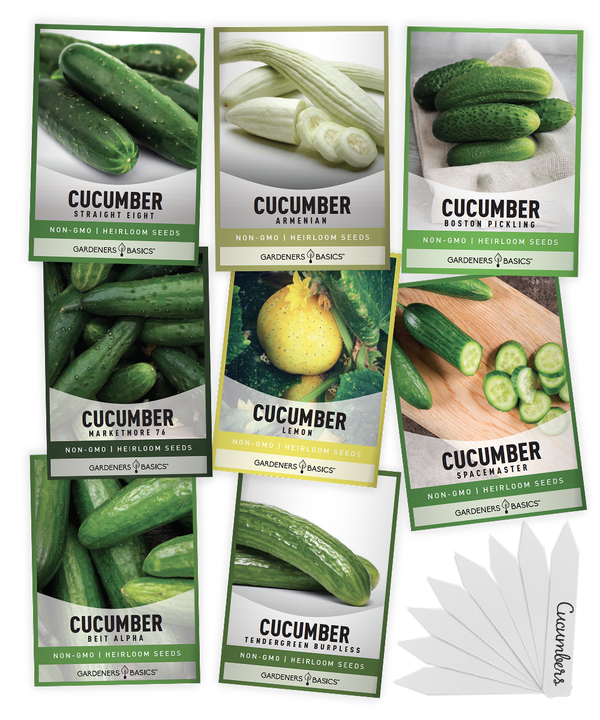
$15.95
Discover the Best Heirloom Cucumber Seeds – 8 Varieties for Fresh, Flavorful Cucumbers Introducing our 8 Cucumber Seeds Variety Pack, the ultimate addition to your garden for growing crisp, flavorful cucumbers! This pack contains a diverse selection of heirloom seeds… read more
Peas
Peas are a cool-season crop that works wonderfully in a vertical garden. They possess natural tendrils that grasp onto any support nearby, making them easy to train up a trellis or netting. Growing peas vertically not only saves space but also makes harvesting easier. As the pods are elevated and more exposed, less bending and searching are required during harvest.
Pole Beans
Just like peas, pole beans are natural climbers and can be trained to grow on a trellis or netting. This method of vertical growth saves a significant amount of space compared to their bushy counterparts. It also improves air circulation around the plants, reducing disease issues and encouraging a healthier, more productive crop. The vertical growth also makes the beans easier to spot and harvest. Growing beans vertically is easy because they naturally want to climb; they do the work for you!
Squash
Growing squash vertically can be challenging due to the size and weight of the fruits, but it's certainly possible with the right preparation. Choosing a smaller variety of squash is the first step. Then, a robust trellis is needed to support the plant's weight. As the squash fruits grow, they may need additional support, like a sling, to prevent them from falling or getting damaged. Growing squash vertically helps improve air circulation around the plant, reducing the risk of fungal diseases.
Melons
With smaller varieties of melons, vertical gardening is a viable option. A strong trellis is a must to bear the weight of the growing melons, and slings might be necessary to support the melons as they grow. This growth method keeps the fruits off the ground, reducing the risk of pests and diseases. Growing melons vertically also allows for better air circulation around the plants, leading to healthier growth and potentially increased yield.
Assorted Melon Seeds | 5 Variety Pack
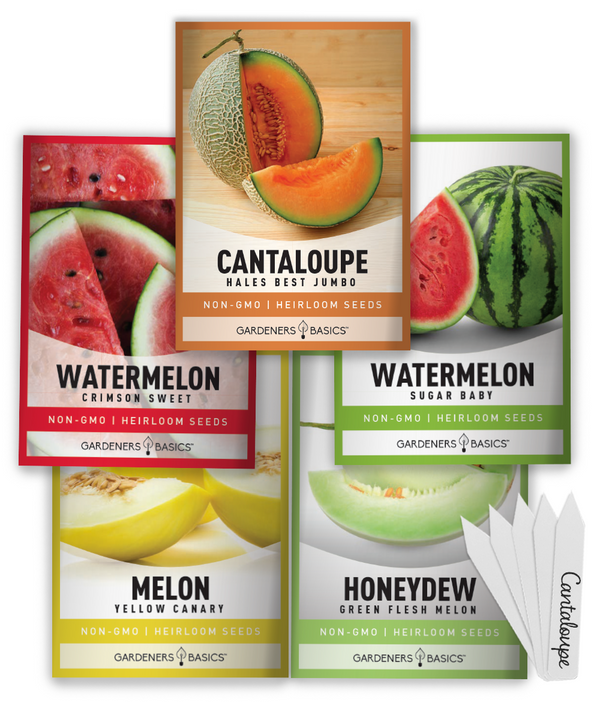
$9.95
Grow Fresh Summer Melons with Our 5-Pack Heirloom Melon Seeds Assortment Are you looking to add some variety to your home garden? Our melon fruit seeds 5 variety pack includes a mix of delicious and nutritious melon seeds that are… read more
Eggplant
Eggplants can thrive in a vertical garden setup with the proper care. As they grow, they become heavy with fruit and can benefit from a cage or stake for support. Growing eggplants vertically keeps the fruits off the ground, reducing the risk of rotting and pest infestation. It also allows for better air circulation, helping to keep the plants healthy. Additionally, it makes the beautiful purple fruits more visible, making it easier to know when they're ripe and ready to harvest.
Sunlight Requirements For Verticle Gardening
One of the most important factors to consider when choosing plants for your vertical vegetable garden is the required sunlight. Different plants have different needs, so choosing plants compatible with the sunlight your garden receives is important. Most vegetables need at least 6-8 hours of full sun each day, while leafy greens and herbs can tolerate some shade.
If your vertical garden is shady, consider planting shade-tolerant crops like lettuce, spinach, and kale. On the other hand, if your garden gets a lot of direct sunlight, you can plant crops that require more light, such as tomatoes or peppers.
Space Availability
Another important factor to consider when choosing plants for your vertical vegetable garden is your available space. Vertical gardens are great because they maximize growing space in small areas. However, choosing plants appropriate for your garden's size is important.
Verticle Gardening Soil Quality and Nutrients
The soil quality in which your plants grow will determine their overall health and yield. It's important to choose the right type of soil based on the specific needs of each crop.
For example, root vegetables like carrots and radishes thrive in loose soil with good drainage, while vining vegetables like tomatoes need richer soil with more nutrients. To ensure sufficient nutrients for all crops throughout their growing season, add organic matter, such as compost or well-aged manure, before planting.
Watering Needs
The amount and frequency you water your vertical vegetable garden will impact plant growth and yield. Most vegetables need consistent moisture to grow well, so choosing crops that can tolerate the water you can provide is essential. In a vertical garden, watering needs can vary depending on the position of each plant.
For example, plants at the top of a vertical garden may dry out faster than those at the bottom due to evaporation. It's essential to establish a regular watering schedule for your garden based on its unique needs.
Consider using a drip irrigation system or self-watering planters, which help maintain consistent soil moisture levels while minimizing water usage. Regular monitoring of soil moisture levels will ensure that your plants receive sufficient water without being overwatered and causing root rot.
Non-GMO Squash Seeds | 8 Variety Pack
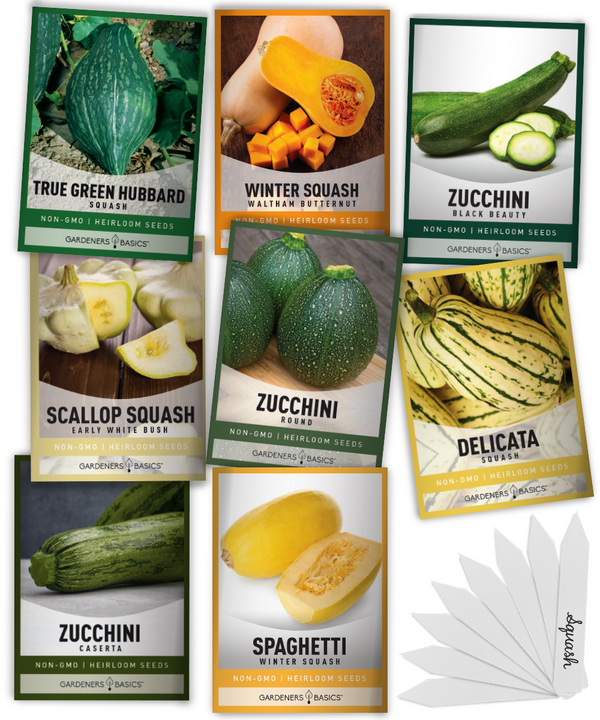
$15.95
Ultimate 8 Squash Seeds Variety Pack for Home Gardeners – Heirloom & Non-GMO Seeds Introducing our 8 Squash Seeds Variety Pack—the ultimate selection for gardeners who love cultivating a diverse range of delicious, homegrown squash! This carefully curated variety pack… read more
Tips for Maintaining a Successful Vertical Garden with These Plants
Proper Plant Spacing and Placement
Proper plant spacing and placement are among the most important factors for a successful vertical garden. When planting your vertical garden, it's essential to consider the size of each plant at maturity and how much space it will need to grow.
You don't want your plants to be overcrowded, as this can lead to poor growth and disease.
You'll need to leave more space between plants, about 12-18 inches, for vining vegetables like tomatoes and cucumbers.
In addition to spacing your plants properly, you should consider their placement in sunlight. Make sure taller plants don't block the sun from reaching shorter ones.
Regular Watering and Fertilizing Schedule
Vertical gardens require regular watering because they tend to dry out more quickly than traditional gardens due to their smaller soil volume. Make sure you water your plants thoroughly so that water reaches all parts of the soil. A good rule of thumb for watering is about once every two days in warm weather months.
During cooler months or rainy spells, less frequent watering may be needed. Fertilizing is also important for healthy growth in a vertical garden.
Use an organic or slow-release fertilizer for leafy greens and herbs every four weeks during the growing season. Vining vegetables may need more frequent fertilization due to their higher nutrient requirements.
Tomato Seed Assortment | 8 Variety Pack
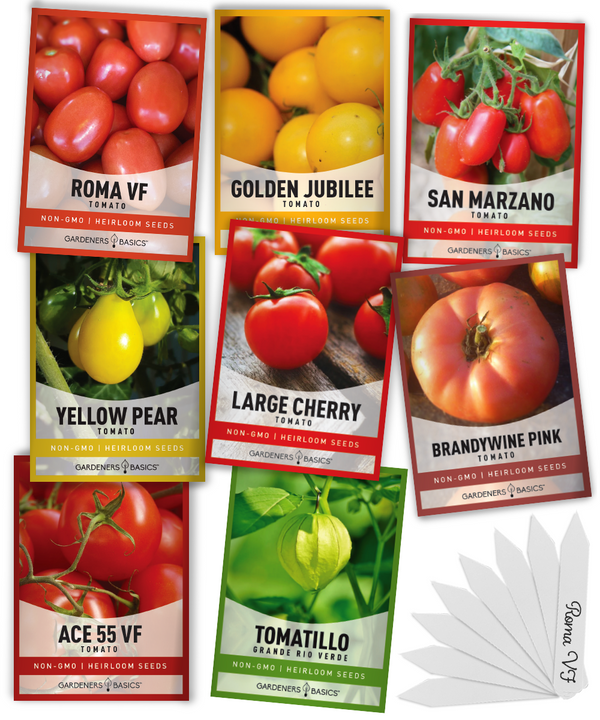
$15.95
8 Tomato Seeds Variety Pack – Heirloom, Non-Hybrid, Open-Pollinated, Non-GMO – Perfect for Home Gardens! Unlock the secrets to a thriving tomato garden with our premium 8 Tomato Seeds Variety Pack! Carefully curated for tomato lovers and gardening enthusiasts alike, this… read more
Pest Control Measures
Pests can wreak havoc on a vertical garden just as quickly as a traditional one. But since vertical gardens are typically smaller than traditional gardens, pests can quickly take over if not kept in check.
One of the best ways to control pests is through prevention. Make sure your plants are healthy and well-fed with proper nutrients.
You can also use companion planting to deter pests. For example, planting marigolds or chives alongside your vegetables can repel pests like aphids and spider mites.
If pests become a problem, organic options exist, such as neem oil, insecticidal soap, and diatomaceous earth. Always follow the instructions on the package carefully and apply during the early morning or late evening when bees and other beneficial insects are less active.
Maintaining a thriving vertical garden requires careful consideration of plant spacing, watering and fertilizing schedules, and pest control measures. Following these tips, you can create a thriving vertical garden that produces abundant fresh vegetables and herbs all season. With just a little effort and attention to detail, you'll enjoy the many benefits of vertical gardening in no time!
Conclusion
Vertical vegetable gardens can provide a bountiful harvest without taking up too much space. The right choice of plants is crucial for the success of such gardens. In this article, we have discussed some of the best plants for vertical vegetable gardens.
Vining vegetables like tomatoes, peas, beans, cucumbers, squash, eggplants, and melons are excellent for your vertical garden. You can grow much in a small space if you send them high up into the air.
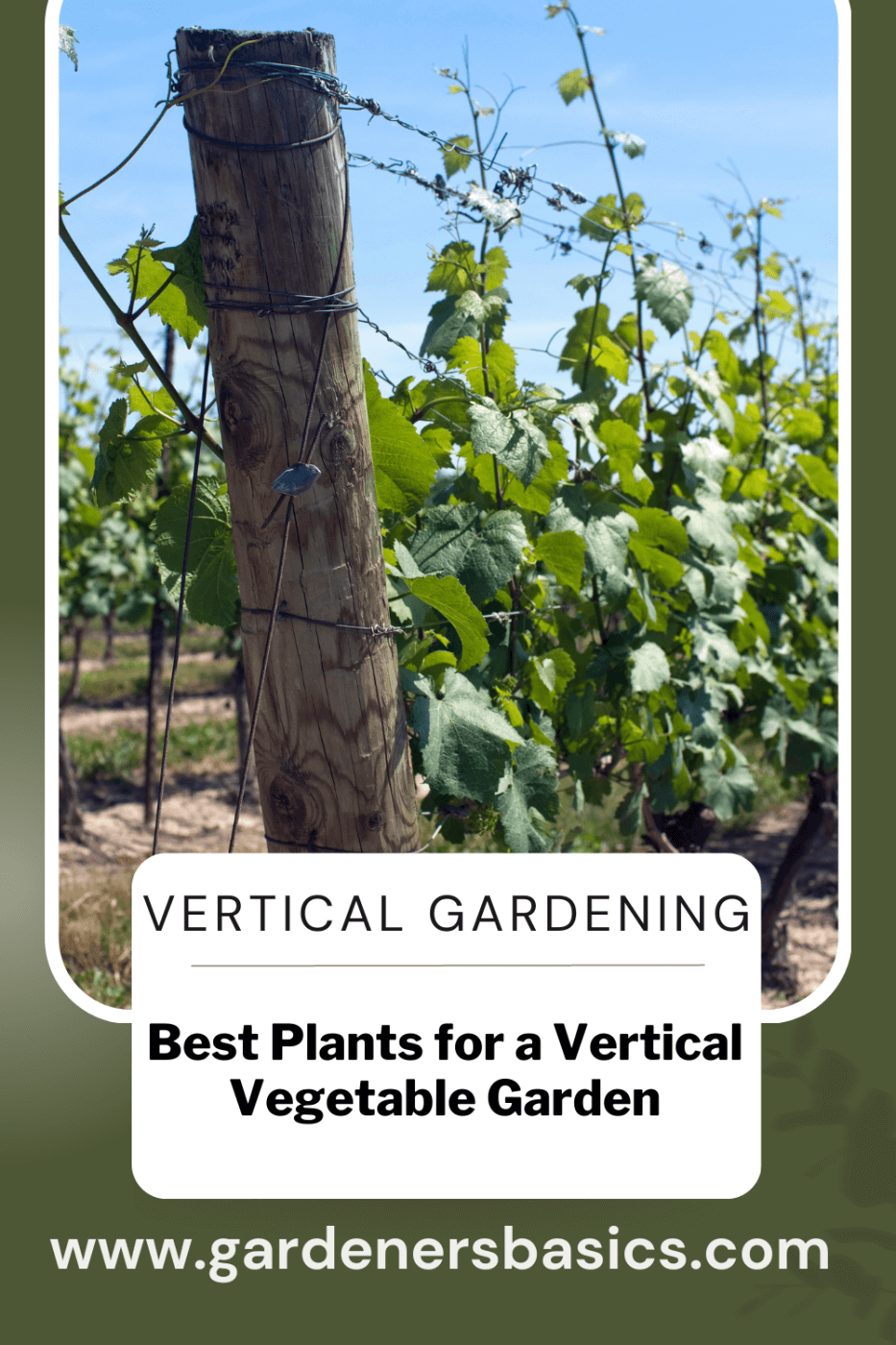 FAQs on The Best Plants for a Vertical Vegetable Garden
FAQs on The Best Plants for a Vertical Vegetable Garden
1. What are some of the best plants for a vertical vegetable garden?
Some of the best plants for vertical gardens include cucumbers, tomatoes, peas, beans, squash, and various melons. These plants are great climbers and can be trained to grow upwards, saving you much ground space.
2. Can all vegetables be grown vertically?
Not all vegetables are suitable for vertical gardening. Root vegetables, like carrots or potatoes, aren't suitable because they grow below ground. Similarly, larger vegetables like pumpkins or watermelons may be too heavy to support a vertical structure.
3. What kind of support do I need for a vertical vegetable garden?
Different plants need different types of support. For example, tomatoes often require sturdy cages or stakes, whereas peas and beans can climb up netting or string. Squashes and melons may need a more robust structure like a trellis.
4. Can vertical gardening improve the yield of my vegetables?
Yes, vertical gardening can actually increase your vegetable yield. This is because it allows for better air circulation, which can reduce the likelihood of disease. Also, it can lead to more even sunlight exposure, which can help the plants grow better.
5. How do I water a vertical vegetable garden?
Watering a vertical garden is usually done at the base of the plants. Drip irrigation systems are often used as they deliver water directly to the roots and prevent the leaves from getting wet, which can lead to disease.
6. Is vertical gardening suitable for small spaces?
One of the main advantages of vertical gardening is that it allows you to grow more in a smaller space. By growing plants upwards, you can take full advantage of the vertical space that would otherwise go unused.
7. Can vertical gardens be grown indoors?
Yes, vertical gardens can be grown indoors with enough light for the plants. This can be natural light from a window or artificial light from grow lights.
8. What are some challenges of vertical vegetable gardening?
Some challenges include providing adequate support for the plants, ensuring they get enough sunlight, and watering them properly. Additionally, some climbing plants may need to be manually trained to grow in the right direction.
9. Do I need any special soil for vertical gardening?
Like all gardens, vertical gardens require high-quality, nutrient-rich soil. However, because they often drain and dry out faster, you may need to pay extra attention to watering and nutrients.
10. How often should I fertilize my vertical garden?
The frequency of fertilization depends on the type of plants you're growing and the type of soil you use. Generally, a balanced, slow-release organic fertilizer applied at the start of the growing season should suffice for most vegetables. Always follow the instructions on the fertilizer package.
Consider sunlight requirements, space availability, and watering needs before planting seeds or seedlings. You will enjoy a bountiful harvest from your sustainable garden with proper maintenance, regular watering/fertilizing schedules, and pest control measures!






